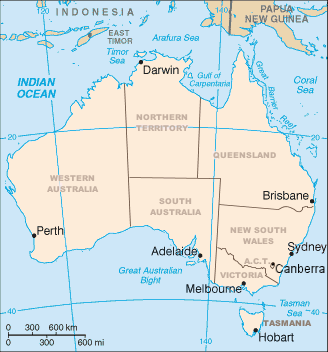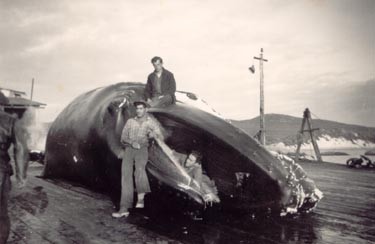|
Caulospongia Biflabellata
''Caulospongia biflabellata'', commonly known as the western staircase sponge, is a species of sea sponge belonging to the family Suberitidae Suberitidae is a family of sea sponges Sponges, the members of the phylum Porifera (; meaning 'pore bearer'), are a basal animal clade as a sister of the diploblasts. They are multicellular organisms that have bodies full of pores and chann .... It is a marine sponge of the temperate waters of Australia (Northwest Cape to Albany, WA).Edgar, Graham J. (2008). Australian Marine Life: The plants and animals of temperate waters (Second ed.). Sydney: New Holland. It was first described by Jane Fromont in 1998, from a specimen collected from Limestone reef flat, Cheyne Beach, Western Australia References Suberitidae Sponges of Australia Taxa named by Jane Fromont {{demosponge-stub ... [...More Info...] [...Related Items...] OR: [Wikipedia] [Google] [Baidu] |
Jane Fromont
Phyllis Jane Fromont is a New Zealand and Australian scientist specialising in sponges. Early life and education Fromont was raised in Whanganui, New Zealand, the youngest of six children. She became interested in marine biology after scuba diving in Northland, and completed a Bachelor of Science degree that included some marine biology papers at the University of Auckland. She then undertook her overseas experience for about two years, before arriving in Perth, Western Australia, where she found work with an environmental consultancy firm and was a volunteer at the Western Australian Museum with curator of marine invertebrates, Loisette Marsh. After attending a workshop in Melbourne on sponges led by Patricia Bergquist and Felix Wiedenmayer, she was encouraged by Bergquist to return to Auckland for postgraduate study. She earned a Master of Science degree from the University of Auckland in 1985, with her thesis titled ''Poecilosclerida of New Zealand'', and while there publish ... [...More Info...] [...Related Items...] OR: [Wikipedia] [Google] [Baidu] |
Sea Sponge
Sponges, the members of the phylum Porifera (; meaning 'pore bearer'), are a basal animal clade as a sister of the diploblasts. They are multicellular organisms that have bodies full of pores and channels allowing water to circulate through them, consisting of jelly-like mesohyl sandwiched between two thin layers of cells. Sponges have unspecialized cells that can transform into other types and that often migrate between the main cell layers and the mesohyl in the process. Sponges do not have nervous, digestive or circulatory systems. Instead, most rely on maintaining a constant water flow through their bodies to obtain food and oxygen and to remove wastes. Sponges were first to branch off the evolutionary tree from the last common ancestor of all animals, making them the sister group of all other animals. Etymology The term ''sponge'' derives from the Ancient Greek word ( 'sponge'). Overview Sponges are similar to other animals in that they are multicellular, het ... [...More Info...] [...Related Items...] OR: [Wikipedia] [Google] [Baidu] |
Suberitidae
Suberitidae is a family of sea sponges Sponges, the members of the phylum Porifera (; meaning 'pore bearer'), are a basal animal clade as a sister of the diploblasts. They are multicellular organisms that have bodies full of pores and channels allowing water to circulate through th ... belonging to the order Suberitida. Genera * Suberites * Homaxinella * Rhizaxinella * Caulospongia * Pseudospongosorites * Aaptos ... References Sponge families {{demosponge-stub ... [...More Info...] [...Related Items...] OR: [Wikipedia] [Google] [Baidu] |
List Of Marine Animals Of Australia (temperate Waters)
The list of marine animals of Australia (temperate waters) is a list of marine and shore-based species that form a part of the fauna of Australia. This list includes animals which either live entirely marine lives, or which spend critical parts of their lives at sea. The geographical range is south of Perth, Western Australia and the border of New South Wales and Queensland, including the whole of the coasts of South Australia and Tasmania and their offshore islands. Tropical species which are also found in this range may also be listed here. The listed organisms are generally identifiable to the naked eye. Many microscopic animals also inhabit this region. Ranges are generally given relating to Australian waters. If listed as endemic, they have been found only in the listed range. Others may have much greater ranges. Phylum Porifera * '' Ancorina geodides'' (Carter, 1886) Grey ball sponge (Victoria and around Tasmania) * '' Aplysilla rosea'' (Barrois, 1876), Encrusting rose ... [...More Info...] [...Related Items...] OR: [Wikipedia] [Google] [Baidu] |
Cheyne Beach Whaling Station
Cheyne Beach Whaling Station is a defunct whaling station in Australia. It now operates as a tourist park known as Albany's Historic Whaling Station, and has previously also been known as Whaleworld or Whale World. The station is situated in Frenchman Bay in King George Sound and was built in the 1950s, operating until 1978. The station takes its name from Cheynes Beach, a small coastal community located approximately east of Albany, Western Australia and surrounded by Waychinicup National Park. History Whalers had been recorded at Cheynes Beach in the 1840s with a commercial fishing operation being established there in 1920. Whaling recommenced there in the early 1950s and the Cheynes Beach Whaling Company was formed by a family syndicate of eight fishermen. The syndicate was headed by two Albany men, G. R. Birss and C. Westerberg, who expected to outlay £20,000 on the venture. The business was relocated to the Frenchman Bay site shortly afterward. Quotas were set for hu ... [...More Info...] [...Related Items...] OR: [Wikipedia] [Google] [Baidu] |
Sponges Of Australia
Sponges, the members of the phylum Porifera (; meaning 'pore bearer'), are a basal animal clade as a sister of the diploblasts. They are multicellular organisms that have bodies full of pores and channels allowing water to circulate through them, consisting of jelly-like mesohyl sandwiched between two thin layers of cells. Sponges have unspecialized cells that can transform into other types and that often migrate between the main cell layers and the mesohyl in the process. Sponges do not have nervous, digestive or circulatory systems. Instead, most rely on maintaining a constant water flow through their bodies to obtain food and oxygen and to remove wastes. Sponges were first to branch off the evolutionary tree from the last common ancestor of all animals, making them the sister group of all other animals. Etymology The term ''sponge'' derives from the Ancient Greek word ( 'sponge'). Overview Sponges are similar to other animals in that they are multicellular, ... [...More Info...] [...Related Items...] OR: [Wikipedia] [Google] [Baidu] |



